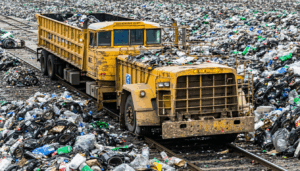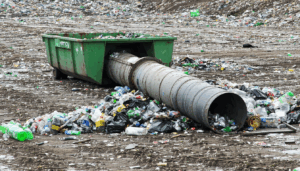Introduction
In the United States, the safe management of biohazard waste has become a pressing concern as healthcare facilities, research labs, and industries generate increasing volumes of potentially dangerous materials. From used syringes to contaminated lab samples, improper disposal poses significant risks to public health and the environment. This article explores the latest developments in biohazard waste disposal, including regulatory changes, innovative technologies, and the challenges stakeholders face. With growing scrutiny on compliance and sustainability, understanding these updates is vital for ensuring safety and environmental protection.
Evolving Regulations for Biohazard Waste Disposal
The U.S. Environmental Protection Agency (EPA) and the Occupational Safety and Health Administration (OSHA) have recently tightened guidelines for handling biohazard waste. As of 2023, over 5.9 million tons of medical waste are generated annually in the U.S., with a significant portion classified as biohazardous. New federal mandates require stricter segregation of waste at the source and enhanced training for healthcare workers to prevent accidental exposure.
These regulations aim to reduce incidents of improper disposal, which can lead to severe consequences like disease transmission. For instance, states like California and New York have introduced penalties of up to $10,000 per violation for non-compliance. This push for accountability underscores the urgency of adopting robust disposal systems across sectors.
Technological Innovations in Waste Management
Advancements in technology are transforming how biohazard waste is managed. Autoclaving, a steam-based sterilization method, remains a popular choice, but newer solutions like plasma gasification are gaining traction. These systems convert hazardous materials into inert ash, minimizing landfill use and reducing environmental impact.
According to Dr. Emily Harper, a waste management expert at Johns Hopkins University, “Innovative technologies are critical to handling the growing volume of biohazard waste safely. Plasma-based systems could cut disposal costs by 20% while meeting stringent EPA standards.” Such innovations are particularly beneficial for hospitals managing tight budgets while prioritizing safety.
Impact on Stakeholders
The implications of these developments extend to various stakeholders, including healthcare providers, waste management companies, and local communities. Hospitals face rising costs—estimated at $1 billion annually nationwide—to comply with updated regulations and invest in advanced disposal systems. Smaller facilities often struggle with these financial burdens, risking non-compliance.
Waste management firms, on the other hand, see opportunities for growth. The U.S. biohazard waste disposal market is projected to reach $3.2 billion by 2028, driven by demand for specialized services. Meanwhile, communities near disposal sites express concerns about potential contamination, prompting calls for greater transparency in waste handling processes.
Challenges and Controversies
Despite progress, challenges persist in ensuring consistent compliance across all 50 states. Rural areas often lack access to certified disposal facilities, forcing some providers to store hazardous materials longer than recommended. This raises risks of accidents and environmental harm.
Public opinion is divided on incineration, a common method for disposing of biohazard waste. While it effectively destroys pathogens, critics argue it releases harmful emissions. Balancing efficiency with environmental responsibility remains a contentious issue, with advocacy groups pushing for greener alternatives.
Future Outlook and Implications
Looking ahead, the focus on sustainable biohazard waste disposal is expected to intensify. The EPA has hinted at forthcoming policies to incentivize zero-waste practices by 2030, potentially reshaping industry standards. Experts predict that investments in eco-friendly technologies will surge as pressure mounts to reduce carbon footprints.
The implications are far-reaching—improved disposal practices could prevent outbreaks linked to mishandled waste while fostering public trust in healthcare systems. However, achieving these goals requires collaboration between policymakers, industry leaders, and communities to address disparities in resources and infrastructure.
In conclusion, biohazard waste disposal in the United States stands at a critical juncture. With stricter regulations, cutting-edge technologies, and ongoing debates over sustainability, stakeholders must navigate complex challenges to protect public health and the environment. Staying informed about these updates is essential as the nation works toward safer and more responsible waste management.
Frequently Asked Questions (FAQ)
- What is biohazard waste?
Biohazard waste includes materials like blood-soaked bandages, sharps (needles), and lab cultures that pose a risk of infection or contamination if not handled properly. - How is biohazard waste disposed of in the U.S.?
Common methods include autoclaving (steam sterilization), incineration, and chemical treatment, followed by secure landfilling or alternative technologies like plasma gasification. - What are the penalties for improper biohazard waste disposal?
Penalties vary by state but can include fines up to $10,000 per violation and potential legal action for endangering public health. - Why are new regulations being introduced?
Rising volumes of medical waste and past incidents of mishandling have prompted authorities to enforce stricter rules to ensure safety and compliance. - How can healthcare facilities stay compliant?
Facilities should invest in staff training, partner with certified waste management services, and adopt technologies that meet federal and state guidelines.





